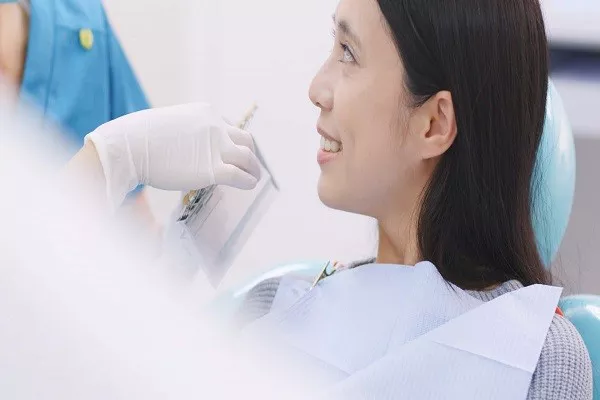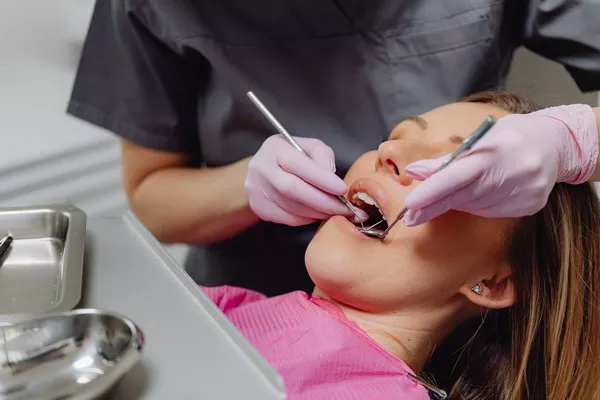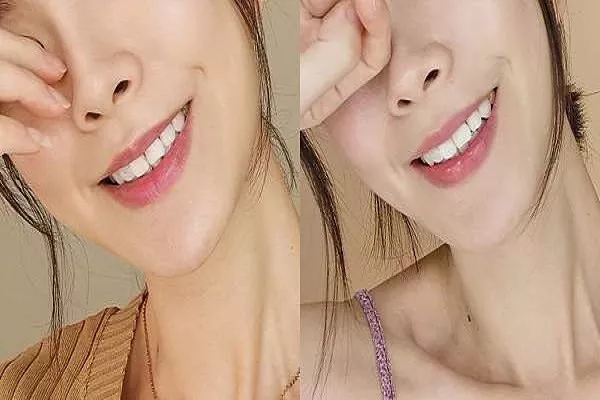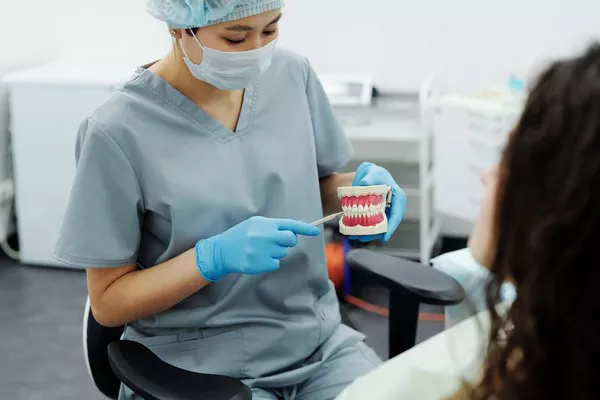Today, let’s talk about whitening teeth.
In fact, our teeth are not pure white, but light yellow and shiny.
It varies from person to person. Some people’s teeth are slightly whiter, some people’s teeth are slightly more yellow, but generally they are yellowish.
Why is that?
Turns out, it’s caused by the structure of our teeth.
The tooth is composed of a crown and a root. The crown consists of three layers from the outside to the inside: enamel, dentin and pulp.
Enamel is colorless and clear, and dentin is yellowish.
So, the color of our teeth is actually the color of the dentin that comes through the enamel.
If you want to whiten your teeth, make sure you talk about why your teeth aren’t white.
The causes of tooth whiteness can be broadly divided into two categories: exogenous and endogenous.
Exogenous discoloration is caused by the deposition of foreign substances on the surface of the tooth, such as smoke, tea, coffee, calculus, and so on.
There is also endogenous discoloration, which is caused by diseases of the teeth themselves, such as dental fluorosis, tetracycline teeth, dead pulp teeth, dental caries and so on.
There are different treatments for different causes.
For exogenous tooth coloring, the most common treatment is Jie zhi, commonly known as “cleaning”.
Simply put, it relies on a dental cleaner to remove the external pigment and let the tooth naturally restore its true appearance.
In addition, regular cleansing is not only to remove pigment, but more importantly to remove calculus and protect periodontal tissue.
If our gums bleed when we brush or eat, we are likely to have gingivitis, and cleaning is the most effective way to treat gingivitis.
However, if it is the disease of the tooth itself that causes the tooth coloring, it is not a “tooth cleaning” can solve, and requires some special methods.
Dental treatment: Because of dental caries and other diseases caused by the change of tooth color, need to consider to fill the tooth, to remove the decay, discolored tooth tissue will not have tooth bleaching: many people have heard of this term, but do not know what it means.
The main mechanism of tooth bleaching is the decomposition of peroxide to produce ecological oxygen and superoxide radicals, which penetrate into tooth enamel and dentin, and decompose large molecules of pigment into small molecules, so as to achieve decolorization.
Basically, it’s a REDOX reaction.
Commonly used peroxides are hydrogen peroxide, urea peroxide, sodium perborate and so on.
Depending on where they are used, they can be roughly divided into two categories: in-clinic use and in-home use.
The office mainly uses 30% hydrogen peroxide. High concentration of hydrogen peroxide is irritating and easy to burn soft tissue, so it should only be used in the clinic.
Family use is mainly carbamide peroxide, this is because carbamide peroxide irritation is small, family use is safe.
The term “cold light whitening” seems to be hot right now.
In fact, the principle of cold light whitening is also the above oxidation reduction process.
“Cold light whitening” means that high-intensity blue light with a wavelength between 480 and 520 nanometers is transmitted through optical fibers and then subjected to special optical treatment to remove all harmful ultraviolet and infrared rays. Then it is illuminated on the whitening agent (mainly composed of hydrogen peroxide and silica with a diameter of 20 nanometers) to rapidly produce REDOX effects.
Quickly remove the pigment from the surface and deep layers of teeth, thus achieving a rapid whitening effect.
However, bleaching can only be effective for mild/moderate tooth staining.
At the same time, remind everyone: ¢Ù before bleaching need to let the doctor check whether it is suitable for bleaching, online bleaching products can not be used casually, let the doctor confirm that your teeth can accept bleaching, confirm the safety after bleaching.
¢Ú Choose regular hospitals for professional bleaching, their own family bleaching before the need to confirm the doctor at the same time need to wash the teeth after bleaching.
Veneer: This may be the last resort to removing tooth staining.
Veneer is an option for people who do not bleaching well.
Of course, veneer is not a panacea, also has its indications, here is not much to say.
However, if there is another way to effectively remove tooth staining, do not use veneers, after all, it will sacrifice part of the tooth tissue method.





























